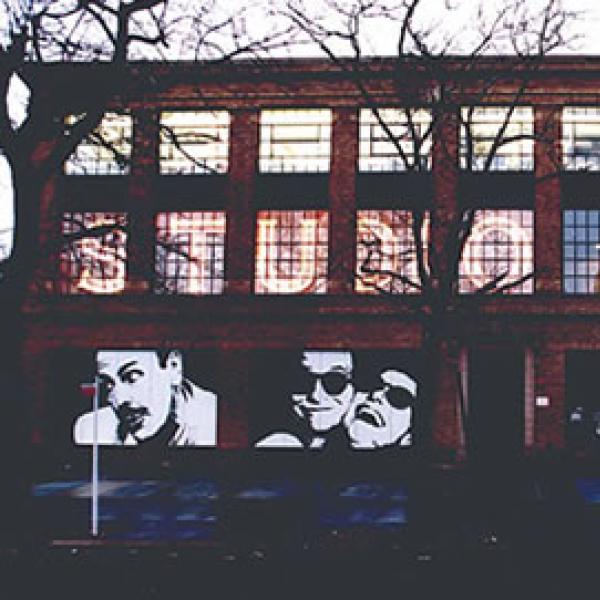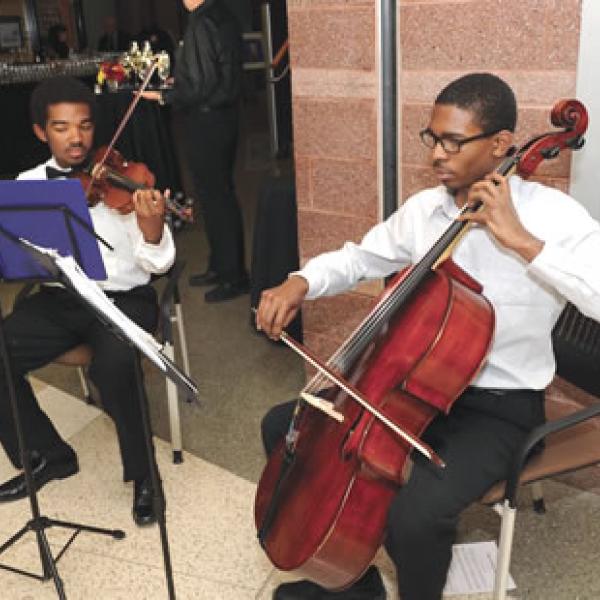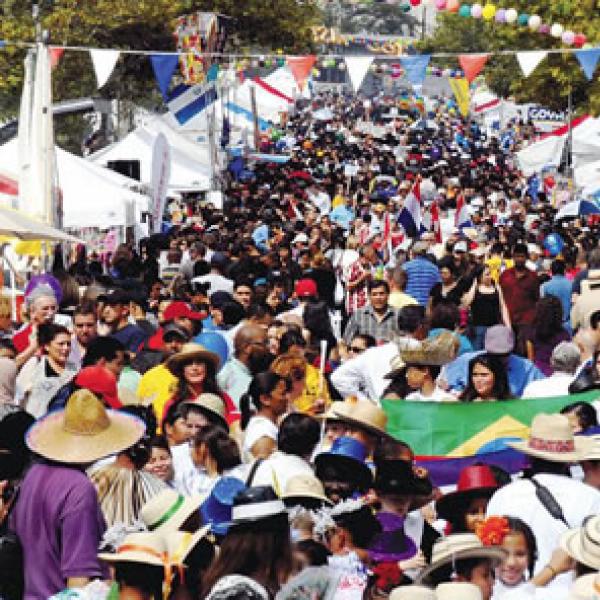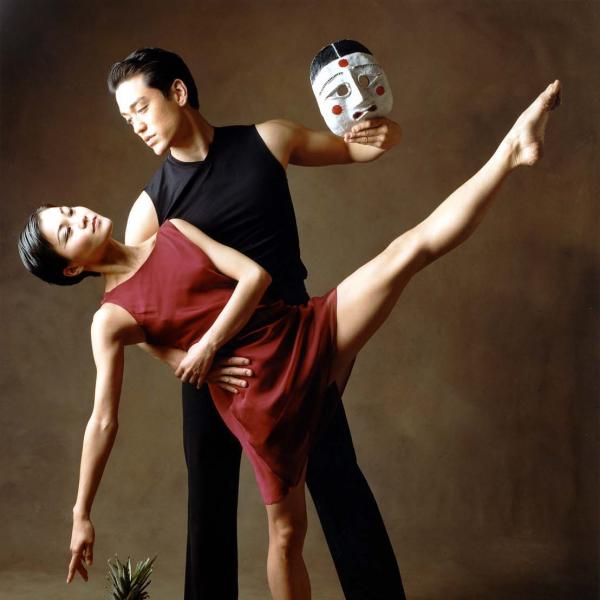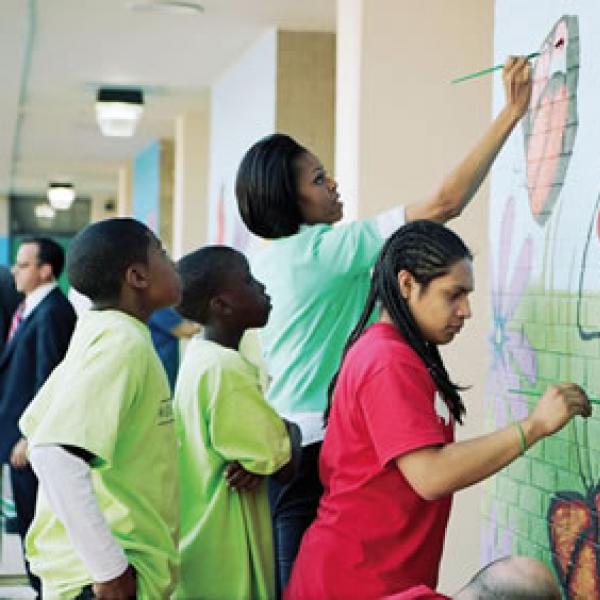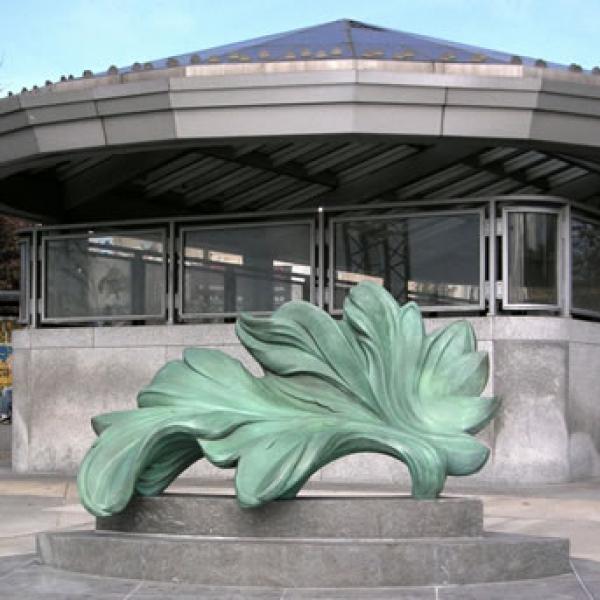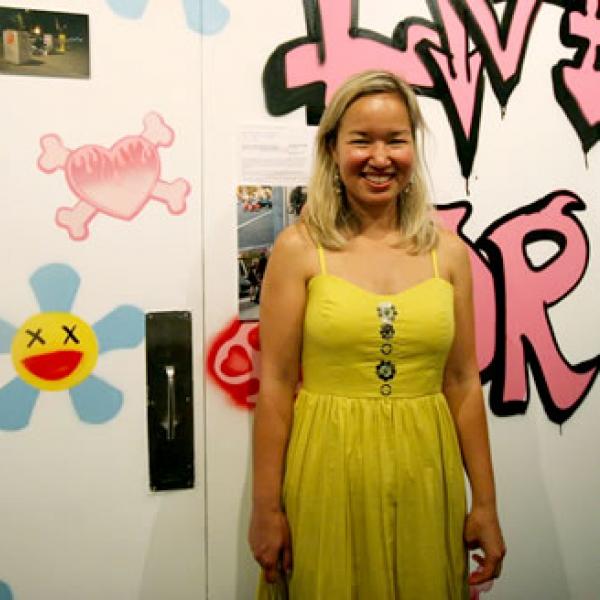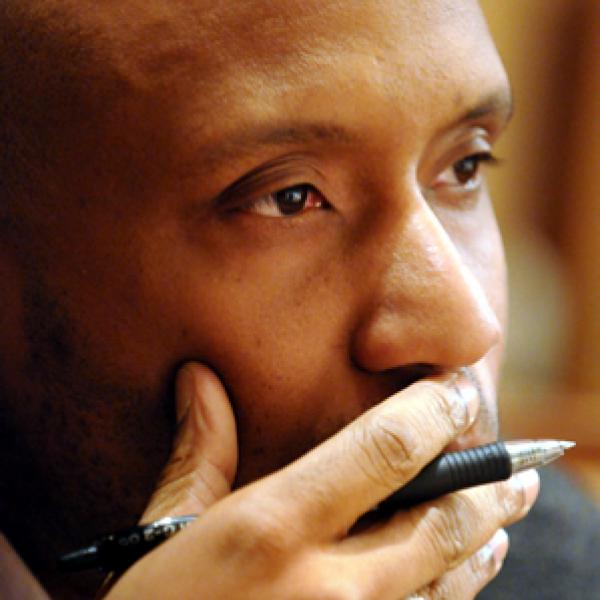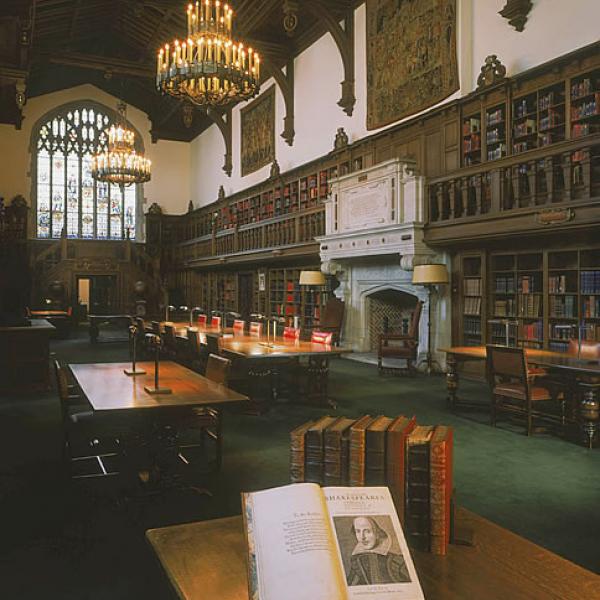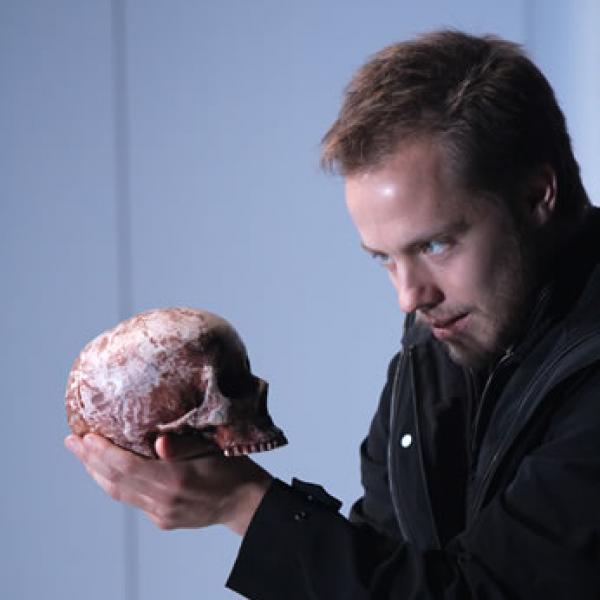A Rich and Vibrant Culture
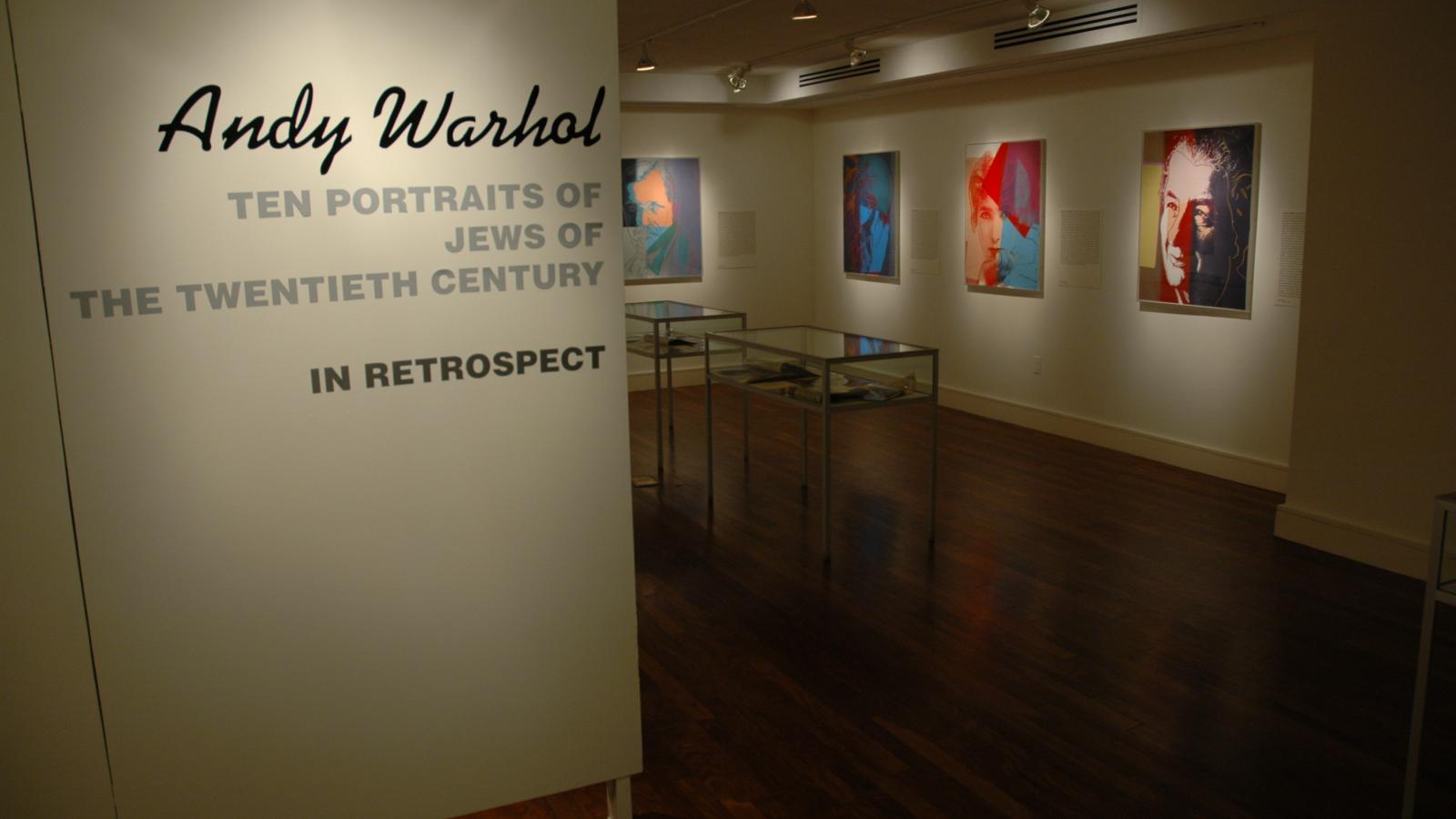
The J's Ann Loeb Bronfman Gallery recently hosted the exhibition Ten Portraits of Jews of the Twentieth Century: In Retrospect, a collection of portraits by Andy Warhol. Photo by Elana McDermott
The DC Jewish Community Center's (DCJCC) mission is simple: to preserve and strengthen Jewish identity, heritage, and traditions in the DC metro region. Chief Program Officer Josh Ford would say that the arts are essential to that mission. "Our philosophy of providing a rich and vibrant Jewish community involves a rich and vibrant culture that is constantly alive and reinventing itself and reacting to the world around it. Arts are the perfect vehicle for that."
He added that arts are a great outreach to modern Jews who are not interested in religion or more traditional practices. "Their Jewish identity is largely a cultural identity and to get them to connect with the art that we present and to see themselves in it, and be challenged by it, and engage in the process of taking their Jewish identity seriously -- if only for an evening of theater -- is also a central part of our mission."
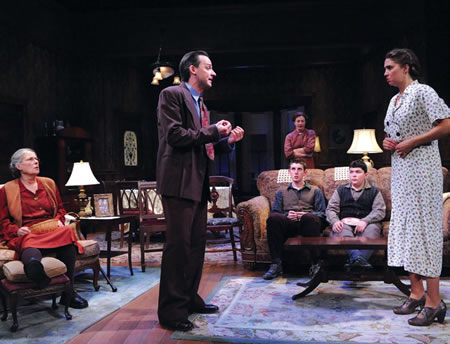
Theater J of the DC Jewish Community Center put on a production of Lost in Yonkers by Neil Simon. |
In fact, the J -- as the community center is familiarly known -- has become one of the major arts presenters in Washington, DC. Most DC-area art lovers have been to at least one performance at Theater J, which has received more than 40 Helen Hayes Award nominations since its inception in 1990. The J's Washington Jewish Film Festival: An Exhibition of International Cinema is one of the best exhibitors of Jewish-themed film. (The festival celebrated its 20th anniversary in 2009.) And then there is the J's Morris Cafritz Center for the Arts, which -- in addition to Theater J and the film festival -- includes a music festival, a literary program, and the Ann Loeb Bronfman Gallery.
With so many avenues to explore art, the J can showcase an art topic in a wide array of forms and disciplines. Take for example, Andy Warhol. Recently the Bronfman Gallery exhibited Ten Portraits of Jews of the 20th Century: In Retrospect, Warhol's 1980 collection of Jewish portraits. Theater J presented Josh Kornbluth's one-man play examining Warhol and Jewish identity, Andy Warhol: Good for the Jews? The screening room ran Marx Brothers films (one of Warhol's subjects) and the Jewish Literary Festival featured a biography of Louis Brandeis (another Warhol subject). Even kids in the J's pre-school got involved by painting their own versions of the Warhol portraits. Ford recalled, "One of the greatest comments when we took the pre-schoolers through the exhibit was one of the kids saw the portrait of Sigmund Freud and said, 'Boy, that guy looks crazy.'"
Ford stressed that though the aims of the J are not all artistic, the standards for the art they present are the highest. "We see our competition as the Kennedy Center or the AFI, or other secular institutions."
The Cafritz Center itself is an impressive building with a community hall, a library, a gallery, a theater -- all of which the J generously offers to other community arts groups as well. An estimated 50,000 people pass through its doors every year.
The building has an interesting history. Calvin Coolidge laid the original cornerstone for the Jewish Community Center on 16th Street in Northwest DC. As the Jewish population began to move to the suburbs outside the city, the J moved along with them to Rockville, Maryland, in 1967. The District, meanwhile, used the original building as a facility for federal city college. Then in the late 1970s and '80s, as the Jewish community came to have more of an urban presence, a satellite JCC returned to DC using townhouses as locations. Eventually a new JCC incorporated in DC and in 1997 moved into its original spot back on 16th Street.
Chief Executive Officer Arna Meyer Mickelson agrees with Chairman Landesman's slogan "Art Works" and experienced it first hand when the J helped revitalize its neighborhood. "Even though many institutions do quality work, there is nothing quite out there in the public like the arts. It's kind of a noisy community because the arts require that you're reviewed, that you're advertising and that you're sending out this, that, and the other. Who [the J] is and the work it does was immediately present to our neighbors."
In addition to the economic help arts bring to the community, Ford stressed the contribution of art. "I really do believe that we're not here preserving something. We're here creating something important, and that makes a difference to the people who see it."
He knows it makes a difference because people tell him. "Standing outside our theater as people exit a concert or play or a film, they say, 'Thank you for the experience.' They've already paid. There's no need to say 'thank you.' There is a real sense of gratitude for what we're doing, and that's really special."


